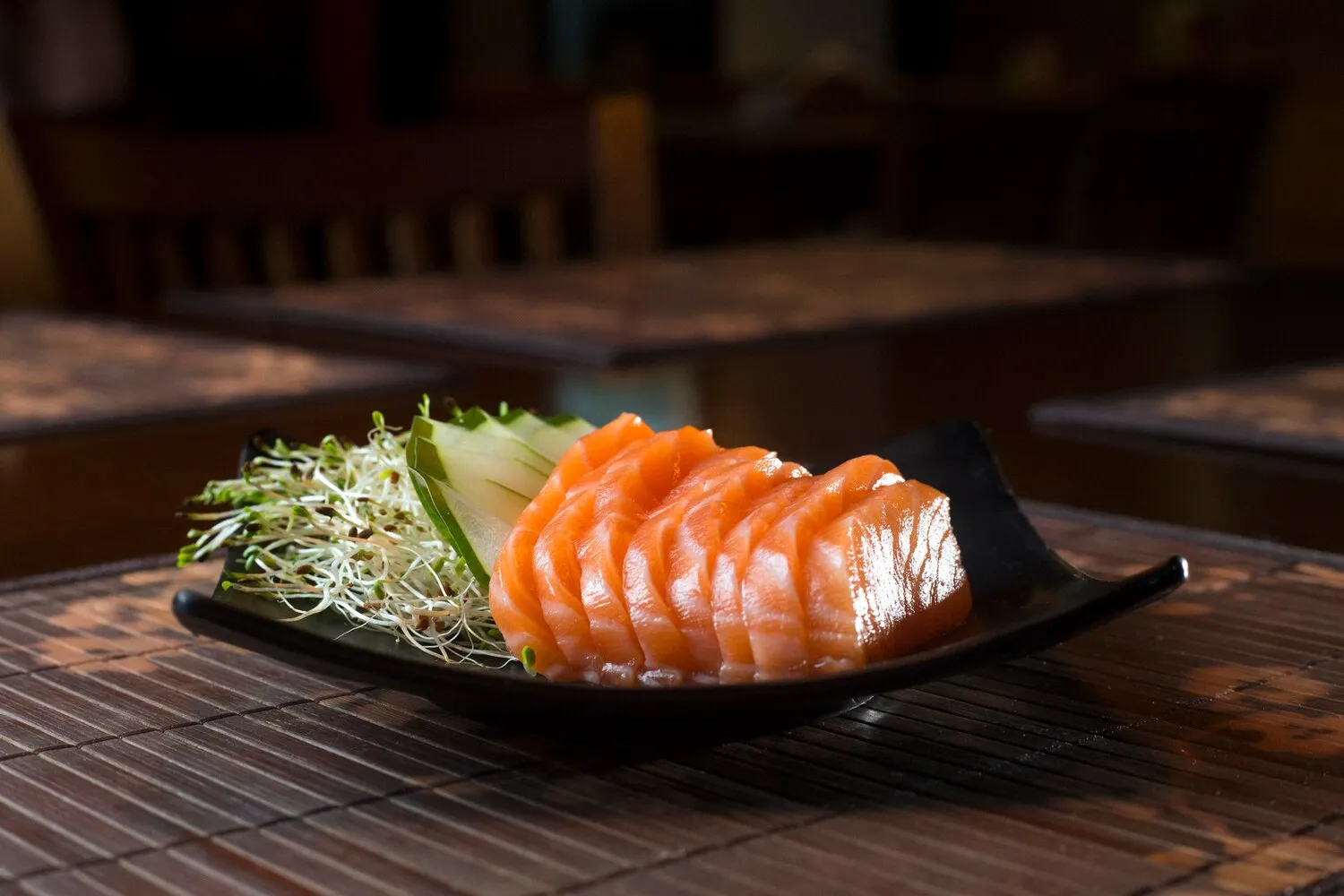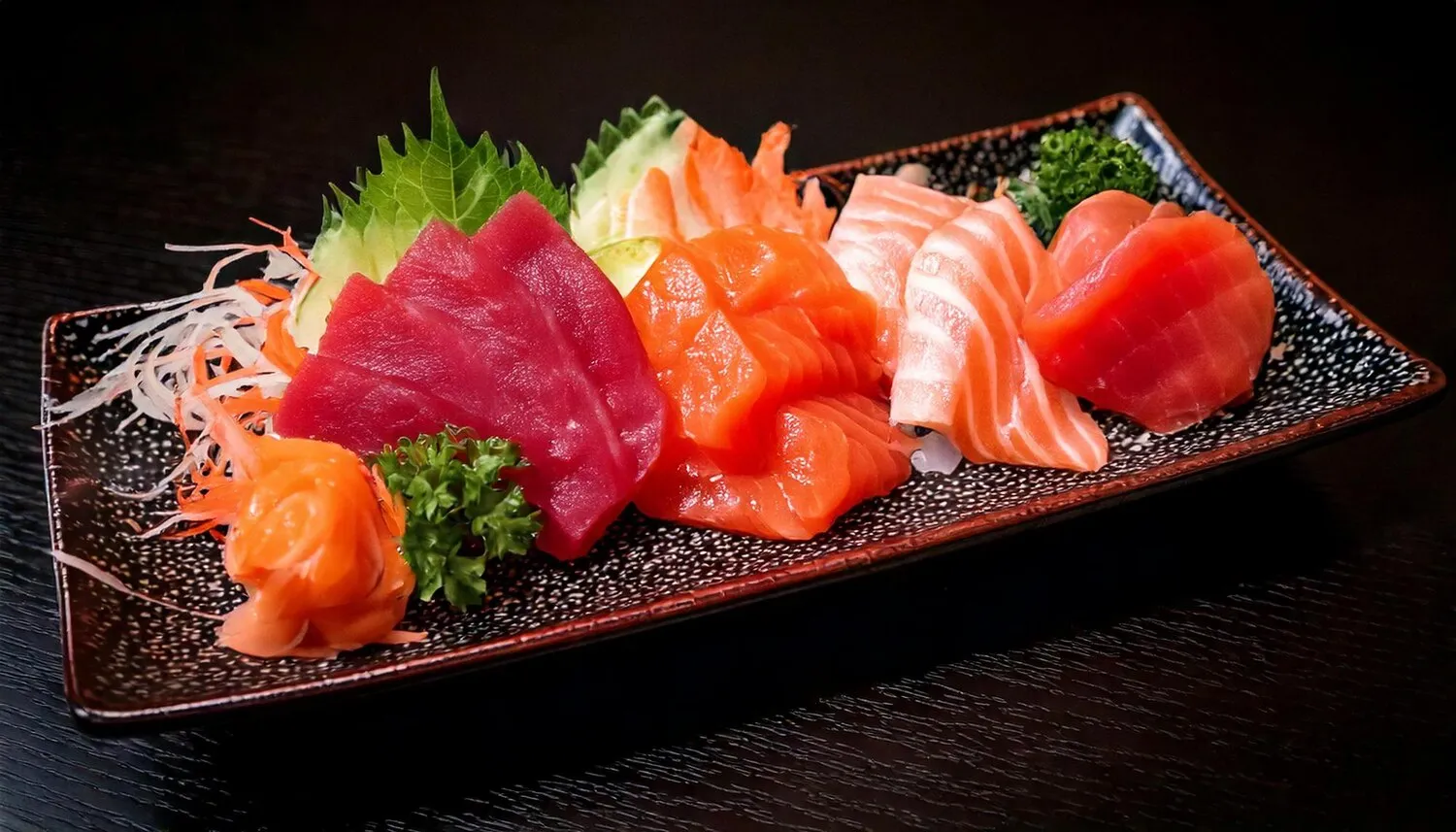
Sashimi Salmão
Thinly sliced raw salmon.
Nutrition Facts
* The % Daily Value (DV) tells you how much a nutrient in a serving of food contributes to a daily diet. 2,000 calories a day is used for general nutrition advice.
Sashimi, a cornerstone of Japanese cuisine, traces its roots back to the Muromachi period (1336-1573). Originally, it involved thinly slicing fish and serving it alongside condiments. Salmon, however, wasn't traditionally used for sashimi in Japan until relatively recently, owing to concerns about parasites. The increased availability of high-quality, parasite-free farmed salmon and advancements in freezing techniques have made salmon sashimi popular globally.
Sashimi embodies the Japanese culinary philosophy of highlighting the natural flavors of ingredients and presenting them with artistic precision. It is often associated with special occasions and celebrations.
Ingredient Quality
The quality and freshness of the fish are paramount. Sashimi-grade salmon is specifically handled and stored to ensure safety and optimal flavor.
Presentation
Sashimi is meticulously arranged on the plate to create a visually appealing presentation, often incorporating edible garnishes like seaweed, shiso leaves, and daikon radish.
Dining Etiquette
Proper etiquette involves using chopsticks to pick up the sashimi, dipping it lightly in soy sauce (only the fish, not the rice), and savoring the flavor.
Seasonality
Although salmon is available year-round, seasonality affects the taste and texture. Some prefer salmon caught during specific seasons for a richer flavor.
Sashimi Salmão is characterized by its clean, delicate, and buttery flavor, enhanced by accompanying condiments.
The primary flavor is the rich, oily, and slightly sweet taste of the raw salmon. This is complemented by the sharp, pungent flavors of wasabi, the salty and umami-rich flavor of soy sauce, and the fresh, herbaceous notes of shiso leaves or daikon radish. The quality of the salmon itself is paramount, with a focus on freshness and a smooth, melt-in-your-mouth texture. The overall experience is a balance of contrasting yet harmonious flavors and textures.
Freshness is Key
Always ensure the salmon is sashimi-grade and impeccably fresh. Purchase from a reputable source with high turnover.
Proper Serving Temperature
Serve the sashimi chilled, but not excessively cold, to allow the flavors to fully develop. Avoid freezing and thawing multiple times, as this can affect the texture.
Soy Sauce Moderation
Use soy sauce sparingly to avoid overpowering the delicate flavor of the salmon. A light dip is sufficient.
Wasabi Usage
Use wasabi to cleanse the palate between different types of sashimi and to add a touch of spice. Mix a small amount into the soy sauce or apply directly to the fish.
Ginger Benefit
Eat the sliced ginger between pieces of sashimi to cleanse the palate and enhance the flavors.
Explore additional Sashimi dishes and restaurants
Explore SashimiDiscover top dining spots and culinary experiences in Natal.
Explore NatalLearn more about the food culture, restaurant scene, and culinary heritage of Brazil.
Explore Brazil
